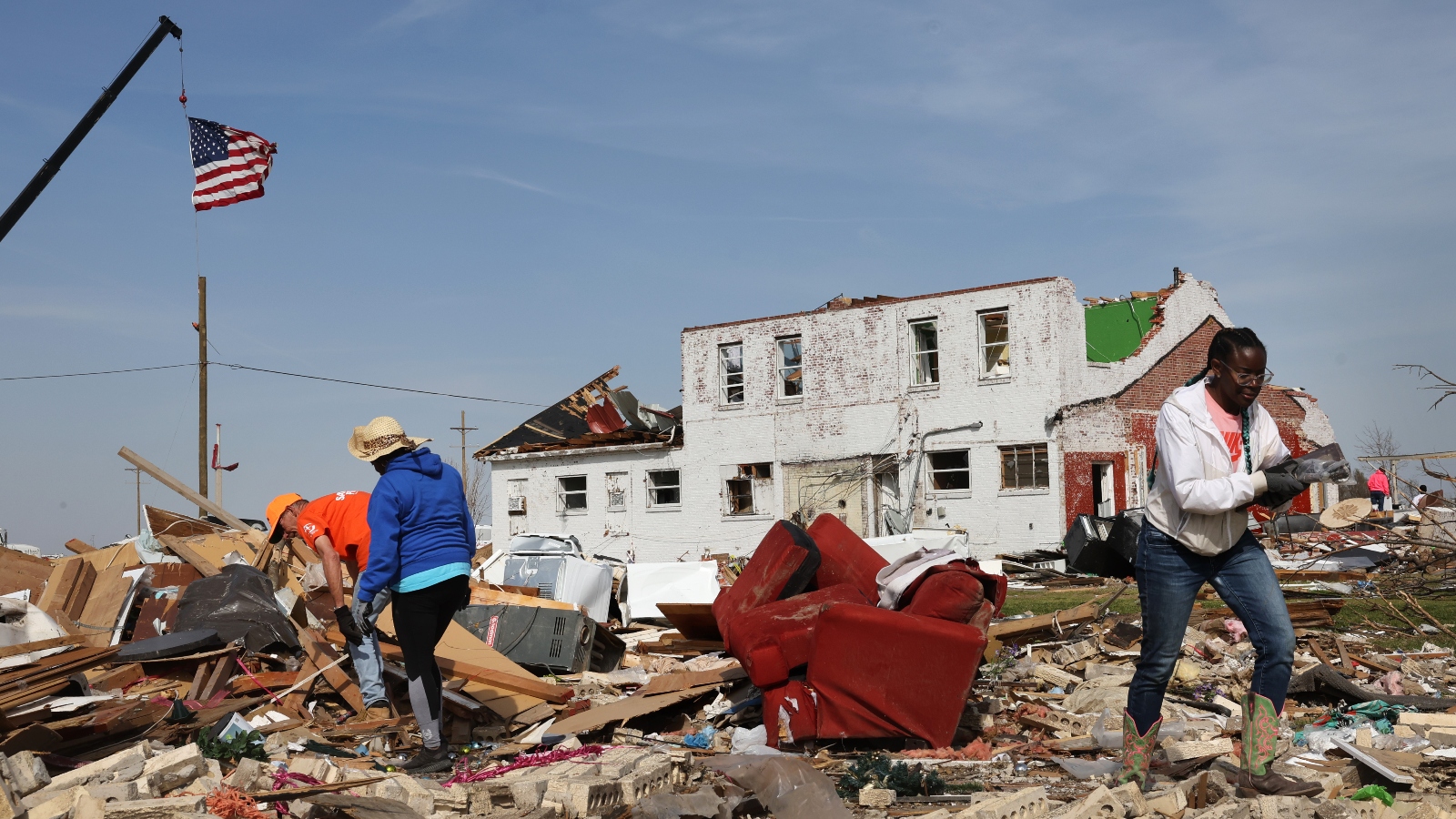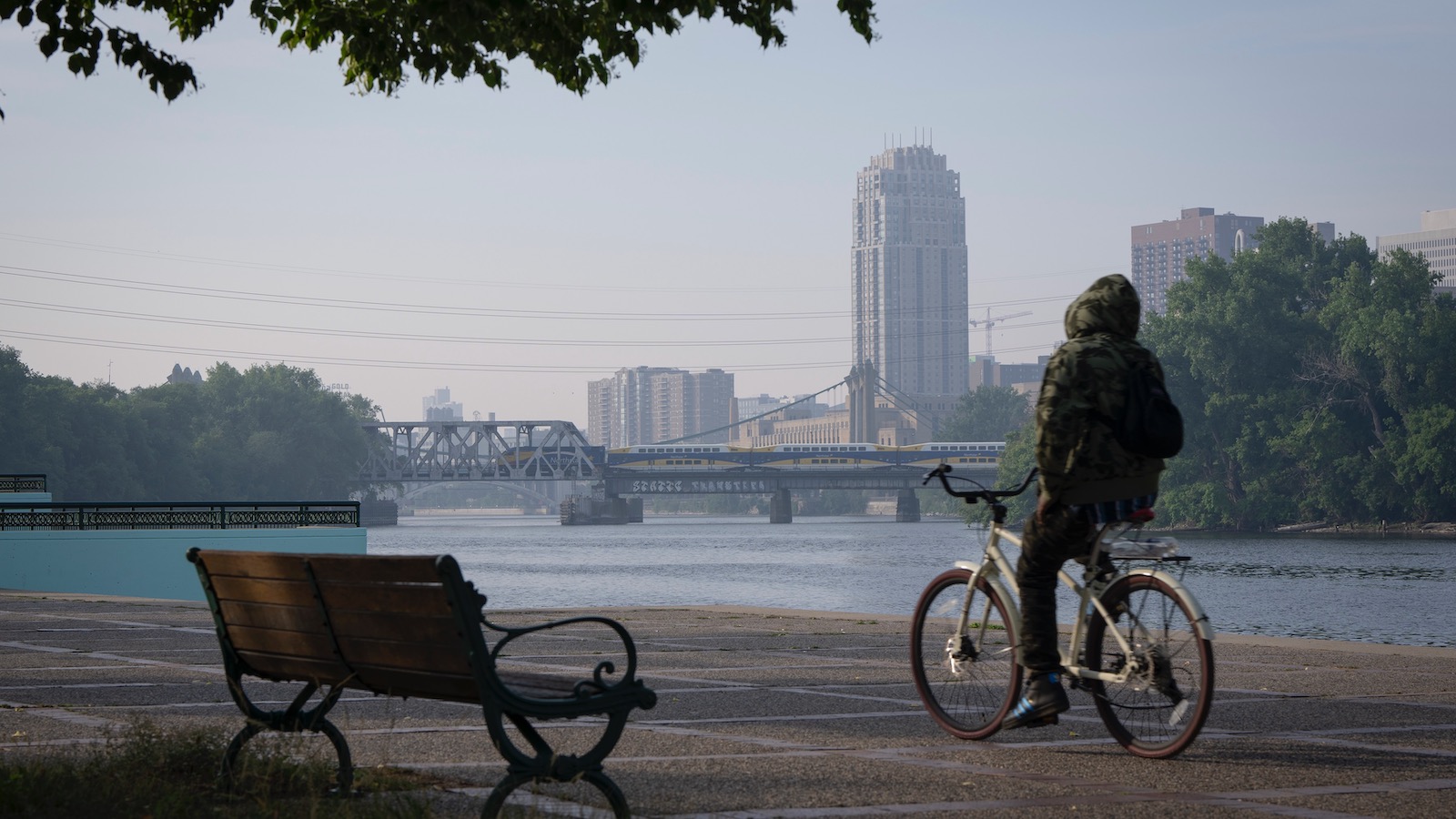As the planet grapples with the ever-starker consequences of climate change, a debut book by Lumbee citizen and Duke University scientist Ryan Emanuel makes a convincing argument that climate change isn’t the problem — it’s a symptom. The problem, Emanuel explains in On the Swamp: Fighting for Indigenous Environmental Justice, is settler colonialism and its extractive mindset, which for centuries have threatened and reshaped landscapes including Emanuel’s ancestral homeland in what today is eastern North Carolina. Real environmental solutions, Emanuel writes, require consulting with the Indigenous peoples who have both millennia of experience caring for specific places, and the foresight to avoid long-term disasters that can result from short-term material gain.
Born in Charlotte, North Carolina, in 1977, Emanuel was one of a handful of Native students at school. He spent summers visiting family in Robeson County, North Carolina, the cultural center of the Lumbee Tribe, or People of the Dark Water, where he played outside with other children, occasionally exploring a nearby swamp, one of the many lush waterways that slowly wind through the region, with a cousin. Today, Emanuel visits those swamps to conduct research. He describes them with an abiding, sometimes poetic affection, such as one spring day when he stands calf-deep in swamp water, admiring white dogwood flowers floating on the dark surface as tadpoles dart underneath.
But that affection lives with tension. Emanuel describes trying to collect “reeking” floodwater samples from a ditch after 2018’s Hurricane Florence. In Emanuel’s retelling, a nearby landowner — a white farmer who uses poultry waste as fertilizer — threatens to shoot Emanuel. The sampling, the man believes, would threaten his livelihood, which is wrapped up in North Carolina’s extractive animal farming industry — a system of giant, polluting “concentrated animal feed operations” overwhelmingly owned and operated by white people, and exposing mainly racial minorities to dirty air and water. They are a sharp contrast to the small backyard farms and truck crops grown by Emanuel’s aunties and uncles back in Robeson County a generation ago. As the man holds his gun and lectures about environmental monitoring, Emanuel reflects silently that they are standing on his ancestors’ land. Ever the researcher, he later finds deed books from around the Revolutionary War showing Emanuels once owned more than a hundred acres of land in the vicinity. Still, he holds a wry sympathy for the man, who, he notes, is worried that environmental data will jeopardize his way of life in a place his family has lived for generations.
Eastern North Carolina is a landscape of sandy fields interwoven with lush riverways and swamplands, shaded by knobby-kneed bald cypress trees and soaked with gently-moving waterways the deep brown of “richly steeped tea,” Emanuel writes. In addition to water, the region oozes history: It includes Warren County, known as the birthplace of the environmental justice movement, where local and national civil rights leaders, protesting North Carolina’s decision to dump toxic, PCB-laden soil in a new landfill in a predominantly-Black community, coined the term “environmental racism.” It’s also the mythological birthplace of English colonialism, Roanoke Island. On the Swamp draws a through line from early colonization of the continent to ongoing fights against environmental racism and for climate justice, with detailed stops along the way: Emanuel’s meticulous research illustrates how the white supremacism that settlers used to justify colonialism still harms marginalized communities — both directly, through polluting industries, and indirectly, through climate change — today.
With convoluted waterways accessible only by small boats, and hidden hillocks of high ground where people could camp and grow crops, the swamplands of eastern North Carolina protected Emanuel’s ancestors, along with many other Indigenous peoples, from genocide and enslavement by settlers. Today, with climate change alternately drying out swamplands or flooding them with polluted water from swine and poultry operations, it’s the swamps that need protection, both as a geographic place, and an idea of home. The Lumbee nation is the largest Indigenous nation in the eastern United States, but because the Lumbee Tribe gained only limited federal recognition during the 1950s Termination Era, its sovereignty is still challenged by the federal government and other Indigenous nations. Today, federal and state governments have no legal obligation to consult with the Lumbee Tribe when permitting industry or development, although the federal government does with Indigenous nations that have full federal recognition, and many industrial projects get built in Robeson County.
In writing that’s both affectionate and candid, On the Swamp is a warning about, and a celebration of, eastern North Carolina. Though the region seems besieged by environmental threats, Indigenous nations including the Lumbee are fighting for anticolonial climate justice.
Grist recently spoke with Emanuel about On the Swamp.
This interview has been edited for clarity and length.
Q. What motivated you to write this book?
A. Many years ago, I thought that I wanted to write a feel-good book about celebrating the Lumbee River and the Lumbee Tribe’s connection with it, and talking about all the reasons why it’s beautiful, and amazing, and important to us. So I thought that I would write this essentially nature story, right? But as my work evolved, and as I started thinking more critically about what I actually should be writing, I realized that I couldn’t tell that love story about the river without talking about difficult issues around pollution, climate change, and sustainability, and broader themes of environmental justice and Indigenous rights.
Q. Could you tell me about your connection to place?
A. I have a relationship to Robeson County that’s complicated by the fact that my family lived in Charlotte, and I went to school in Charlotte, and we went to church in Charlotte. But two weekends every month, and every major holiday, we were in Robeson County. And so I’m an insider, but I’m also not an insider. I’ve got a different lens through which I look at Robeson County because of my urban upbringing, but it doesn’t diminish the love that I have for that place, and it doesn’t keep me from calling it my home. I’ve always called it home. Charlotte was the place where we stayed. And Robeson County was home.
I can’t see the Lumbee River without thinking about the fact that it is physically integrating all of these different landscapes that I care about, [and] a truly beautiful place.
Q. In 2020, after years of protests and legal battles, Dominion Energy and Duke Energy canceled the Atlantic Coast pipeline, which would have carried natural gas 600 miles from West Virginia to Robeson County. In On the Swamp, you note that a quarter of Native Americans in North Carolina lived along the proposed route of the Atlantic Coast Pipeline. What was the meaning of the Atlantic Coast pipeline project for Lumbee people?
A. That was an issue very few Lumbee people paid attention to, until they saw the broader context to the project and realized that such an outsized portion of the people who would be affected by the construction and operation of that pipeline were not only Native American, but were specifically Lumbee. I think that’s what generated a lot of outrage, because for better or for worse, we’re used to being treated like a sacrifice zone.
The Atlantic Coast pipeline gave us an easy way to zoom out and ask questions like, “OK, who is going to be affected by this project? Who’s making money off of this project?”
It was also a way to engage with larger questions about things like energy policy in the face of climate change and greenhouse gas emissions. [It] brought up philosophical questions of how we feel about the continued use of fossil fuels and the investment in brand new fossil fuel infrastructure that’s going to last 30, 40, or 50 years, at a time when everybody knows we shouldn’t be doing that.
Q. At the end of the day, the Atlantic Coast pipeline didn’t happen. What do you think is the main reason?
A. The collective resistance of all of these organizations — tribal nations, committed individuals, grassroots organizations — was enough to stall this project, until the developers realized that they had fallen into the Concorde fallacy. Basically, they got to the point where they realized that spending more money was not going to get them out of the hole they had dug in terms of opposition to this project.
But as long as [developers] hold on to those [property] easements, there’s certainly a threat of future development.
Q. You write that people can physically stay on their ancestral land and still have the place taken away by climate change, or by development projects. Can you talk a little bit about still having the land but somehow losing the place?
A. The place is not a set of geographic coordinates. It’s an integration of all the natural and built aspects of the environment. And so climate change, deforestation, these other types of industrialized activities, they have the potential to sweep that place out from under you, like having the rug pulled out. All of the things that make a set of geographic coordinates a beloved place can become unraveled, by these unsustainable processes of climate change and unsustainable development. I think that the case studies in [On the Swamp] show some of the specific ways that that can happen.
Q. Could you talk about your experiences as a researcher going out in the field, navigating modern land ownership systems, and how that connects to climate change?
A. I don’t know if it’s fair to say that I have to bite my tongue a lot, but I kind of feel that way. When I hear people talk about their ownership of our ancestral lands — I’m a mix of an optimist and a realist, and I understand that we’re not going to turn back the clock. And frankly, I’m not sure I want to, because Lumbee people are ourselves a product of colonial conflict, and we wouldn’t exist as the distinct nation that we are today, if it were not for the colonial violence that we survived. We might exist as our ancestral nations and communities, but we definitely wouldn’t be Lumbee people. So this is a complicated issue for me.
When we think about the front lines of climate change, we don’t often think about Robeson County, North Carolina. But because our community is so attuned to that specific place, we’re not going to pick up and move if the summers get too hot, or if the droughts are too severe. That’s not an option for us. So I think that some of the urgency that I feel is not too different from the urgency that you hear from other [Indigenous] people who are similarly situated on the front lines of climate change.
Q. Something else that you make a really strong point about in this book is that something can be a “solution” to climate change, but not sustainable, such as energy companies trying to capture methane at giant hog farms in Robeson County. How should people think about climate solutions, in order to also take into account their negatives?
A. The reason why people latch onto this swine biogas capture scheme is if you simply run the numbers, based on the methane and the carbon dioxide budgets, it looks pretty good.
But a swine facility is a lot more than just a source of methane to the atmosphere, right? It’s all these other things in terms of water pollution, and aerosols, and even things like labor issues and animal rights. There are all these other things that are attached to that kind of facility. If you make a decision that means that facility will persist for decades into the future operating basically as-is, that has serious implications for specific people who live nearby, and for society more broadly. We don’t tend to think through all those contingencies when we make decisions about greenhouse gas budgets.
Q. What are some ways that the Lumbee tribe is proactively trying to adapt to climate change?
A. Climate change is not an explicit motivation [for the Lumbee Tribe]. If you go and read on the Lumbee Tribe’s housing programs website, I don’t think you’re going to find any rationale that says, “We’re [building housing] to address climate change.” But they are.
Getting people into higher-quality, well-insulated and energy-efficient houses is a big deal when it comes to addressing climate change, because we have a lot of people who live in mobile homes, and those are some of the most poorly insulated and least efficient places that you could be. And maybe 40 years ago, when our extreme summer heat wasn’t so bad, that wasn’t such a huge deal. But it’s a huge deal now.
Q. What is the connection between colonialism and climate change for eastern North Carolina, and why is drawing that line necessary?
A. The one sentence answer is, “You reap what you sow.”
The longer answer is, the beginning of making things right is telling the truth about how things became wrong in the first place. And so I really want this book to start conversations on solving these issues. We really can’t solve them in meaningful ways unless we not only acknowledge, but also fully understand, how we got to this point.
This story was originally published by Grist with the headline In a debut book, a love letter to eastern North Carolina — and an indictment of colonialism as a driver of climate change on May 17, 2024.



